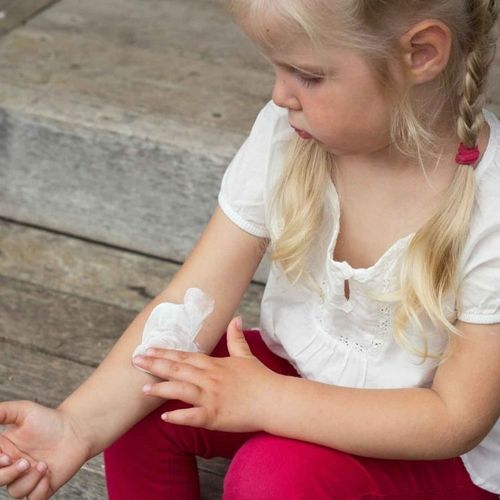Staph infections used to be a hospital-based problem, treatable with available antibiotics. Now they occur with increasing frequency outside of the hospital. The new, antibiotic-resistant strain of staph is known as MRSA, methicillin resistant Staphylococcus Aureus. It is resistant to antibiotics such as penicillin and amoxicillin and it turns ordinary scrapes and cuts into potentially fatal problems.
According to Jay Kostman, MD, chief, infectious diseases division at the Penn Presbyterian Medical Center in Philadelphia, many common wound infections that would have responded to routine antibiotics are nov/ MRSA infections, and they resist traditional treatment. Staph bacteria are everywhere, including on the body, but they're harmless unless there is a break in the skin. In places where people gather and literally rub shoulders, and sometimes torilels (think gyms, Jacuzzis, and locker rooms), a cut, scrape or even a rug burn can be an invitation for the bacteria to hop in and cause trouble.
Athletic teams, children at camp and toddlers in day-care centers in close quarters are all vulnerable to the possibility of MRSA infection. It can also result from everyday falls on a sidewalk-or anywhere that provides an opportunity for the bacteria to penetrate the outer layers of the skin 50 to the underlying tissue, perhaps eventually entering the blood stream.
HOW TO PROTECT YOURSELF
The first and best precaution is to cleanse all wounds thoroughly, even small ones. Cover with a bandage to keep the area clean, until healed. Dr. Kostman advises to wash minor cuts with soap and water ot an antibacterial soap. A topical antibiotic such as Neosporin may be applied after cleaning, but OTC ointments should be used sparingly, as bacteria are becoming resistant to these everyday antidotes. For deeper injuries, seek medical attention immediately.
As a rule, careful cleaning protects against infection. But watch the wound as it heals to be sure no infection sets in, says Dr. Kostman. 'Watch for these changes, which might signal infection...
- Pain or tenderness at the site of the wound.
- Fever, even a slight one.
- Redness around the wound (especially red streaks running up from the wound site)'
- Drainage of pus.
If any symptoms develop, see your doctor right away to be tested for MRSA or other bacteria. Several types of antibiotics are effective for MRSA. These include trimethoprim-sulfamethoxazole (Bactrim), clindamycin (Cleocin), and sometimes linezolid (Zyvox) or uancornycin (Yancocin). These medications must be taken for up to two weeks.
MRSA infections can both develop and escalate, including into a bloodstream infection, startlingly fast, sometimes in hours. This kind of rapidly moving infection is a medical emergency- do not wait for the next morning to call the doctor...get to the ER right away. Danger signals include a fever that reaches 102 degrees and is accompanied by shaking, chills, severe muscle aches and pains and altered thinking. Other infections may remain localized, says Dr. Kostman, typically showing up as an abscess with extreme tenderness and redness, similar in appearance to a boil.
Even after minor cuts and scrapes, remain vigilant for some time, because MRSA infection can develop even a few weeks later. As a rule, says Dr. Kostman, the danger of infection decreases sharply once a wound has closed, but even then it talies some time to be completely clear of risk.
